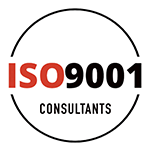ISO 9001 for the crane industry

Benefits of ISO 9001BENEFITS
for the crane industry in Australia
Regulatory Compliance
Win Tender Contracts
Efficiency and accuracy
Injury prevention
What is ISO 9001?
ISO 9001 delineates the specific requirements for creating an effective, sustainable and modern Quality Management System (QMS). Acquiring the certification proves your ability to consistently provide high-quality products and services that meet customer expectations and regulatory requirements.
In the ISO 9000 family of standards, the ISO 9001 standard is the most popular and the only standard against which organisations can get certified. The standard was published in 1987 and composites the recommendations of various national standard bodies from more than 160 countries. The latest version of ISO 9001 was released in 2015.
Benefits of ISO 9001 for your organisation
- Increased efficiency: ISO 9001 modifies your processes and procedures to focus on quality assurance.
- Increased revenue: As you can showcase consistency in the quality of your products and services, you win more contracts and tenders. Additionally, as a direct consequence of streamlining the processes, you can identify better growth opportunities.
- More excellent employee morale: By streamlining your processes, you ensure that your employees are working on one plan, reducing errors and increasing productivity.
- International recognition: The ISO 9001 standard is recognised in approximately 188 countries; certification can help you access newer markets and facilitate international trade.
- Factual approach to decision-making: By basing your business strategies on facts instead of assumptions, you ensure that the business decisions are beneficial in the long term.
- Better supplier relationships: Relationship management is one of the core components of ISO 9001. The standard teaches you how to audit and assess inputs from your suppliers. Moreover, suppliers have greater confidence in what they do because of the enhanced credibility of their business due to the reputation of ISO 9001.
- Improved record-keeping: The standard requires you to document your processes from their inception to their current status. This dynamic record-keeping system helps you handle customer feedback and improve process efficiency.
- Improved customer satisfaction: The standard ensures that you have a system in place to understand your customer’s needs, sort through their feedback, identify areas of improvement and find ways to reduce wastage of resources.
- Continuous improvement: By using trend analysis and non-conformity reporting, you can spot areas of improvement and stay ahead of the curve.
ISO 9001 process for the crane industry
Generally, if your company is small to medium-sized and already has a good level of quality control, you can expect to complete your ISO certification process within 3 to 6 months. However, if your company is more complex, for example, if you have night shift workers, the certification process will take longer.
The following are the critical elements of the ISO certification process that managers need to keep in mind when implementing the QMS within the organisation.
- Learning about ISO: Before you can even begin to implement the standard, it is necessary to understand the ISO 9001 life-cycle, the purpose of the standard and how it can benefit your organisation.
- Recognising existing gaps: To understand how much time would be needed for the certification process, it is helpful to conduct a gap analysis. A gap analysis is essentially an assessment that compares your current quality control with the recommendations stipulated in the standard. This will allow you to understand where you need to modify your processes and where you need to develop new ones.
- Prepare your documentation: Good documentation serves as evidence for future audits that you have adhered to the standard’s recommendations. To maintain your documentation correctly, you must begin to record how you conducted the gap analysis, the findings of the analysis and how you implemented corrective actions to address these gaps. The modifications of your processes or the development of the new ones should also be recorded. Moreover, you need to use quantifiable data to track the progress of your newly modified processes. In addition to keeping track of your processes, good documentation also involves the creation of clear, concise and definite quality objectives and principles.
- Implement your plan: The QMS is brought to life during this phase. The corrective actions planned to address the identified gaps would be incorporated into the operations during this stage. The transition becomes seamless if the documentation in the planning phase has been done successfully.
- Auditing: This is an ongoing element of the certification life-cycle where you need to constantly assess the progress and functionality of your processes to determine if they are functioning as described in the documents. Auditing will help you enhance efficiency, track progress, identify growth areas, and reduce redundancy in your processes.
- Ongoing improvement: Periodic audits will allow you to identify areas of improvement within your processes.
How to get ISO 9001 for your crane company?
We understand that the certification process may seem daunting, and understanding the standard’s requirements can seem overwhelming. This is why our certification services give you a “hands-free” experience by incorporating our three pillars:
• Pillar one- A personalised service for companies without time or ISO certification expertise.
• Pillar two- An ultra-fast three-week turnaround adds certainty when accepting new contracts.
• Pillar three- A complete hands-off solution with a 100% money-back guarantee for zero risk.










